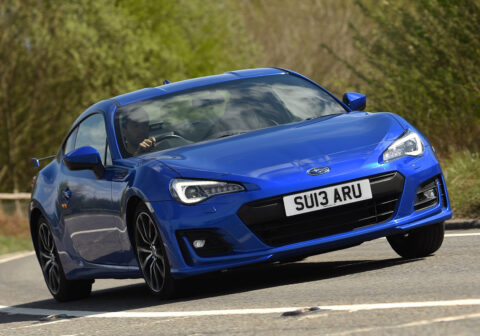
While the GT86 sold in greater numbers in the UK, mostly due to Toyota’s larger dealer network and longer warranty, the BRZ’s rarity could solidify it as the more appealing choice for you.
Just keep in mind that this is reflected in marginally higher prices. But back to the driver’s seat, because we must mention the BRZ’s six-speed manual gearbox. Not only does it add another layer of engagement, but it’s also simply a joy to use.
An automatic is available, but choosing that would be like joining a rock band with the triangle as your instrument. Another reason to avoid the auto is because it actually makes the BRZ slower: it has a claimed 0-62mph time of 8.2sec, while the manual can complete the sprint in 7.6sec.
The BRZ was benchmarked against the Porsche Cayman R, and it sits 100kg lighter than its rival at 1239kg and has a centre of gravity 2.5cm lower. The power deficit – more than 100bhp – is not dwelled on, however.
On the subject of performance figures, it’s worth discussing power. The BRZ’s 197bhp is a decent amount, on a par with what you would get from a hot hatch such as the Ford Fiesta ST. Torque is a different story, though.
The 2.0-litre boxer four is naturally aspirated, and without the help of a turbocharger or supercharger, it produces only 151lb ft.
This peak arrives way up at 6400rpm too, so there’s an incentive (if one were needed) to rev the BRZ out. Let’s reiterate: this car was never meant to be a speed demon.
Of course, you can add power via modifications, although obviously that won’t be cheap, and for many owners, a key reason for choosing the BRZ is its affordability.
When it arrived back in 2012, the BRZ was priced from £26,000, undercutting rivals from premium brands. Sure, it came in at a higher price than the 2.0-litre Mazda MX-5, but then the Subaru was the more practical and powerful sports car.
A mid-life facelift in 2017 saw Subaru not tinker too much with the BRZ. Tweaks were made to the engine block, including strengthening the cylinder block, reducing friction of the camshaft and valve stems, while reducing the weight of the rocker arms all in the name of making the boxer engine more responsive and fuel efficient.
